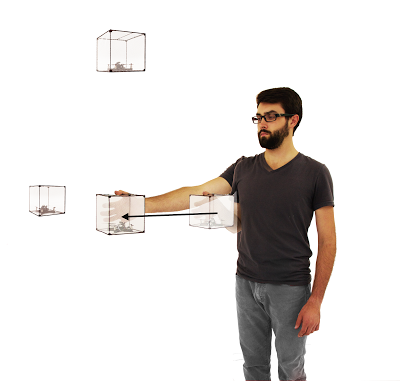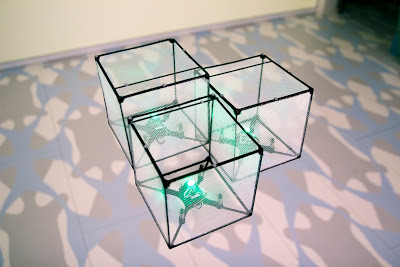| Online: | |
| Visits: | |
| Stories: |

| Story Views | |
| Now: | |
| Last Hour: | |
| Last 24 Hours: | |
| Total: | |
Bitdrones: Interactive Flying Microbots Show Future Of Virtual Reality Is Physical
Queen’s professor Roel Vertegaal and his students are unveiling the BitDrones system on Monday, Nov. 9 at the ACM Symposium on User Interface Software and Technology in Charlotte, North Carolina. BitDrones is the first step towards creating interactive self-levitating programmable matter – materials capable of changing their 3D shape in a programmable fashion – using swarms of nano quadcopters. The work highlights many possible applications for the new technology, including real-reality 3D modeling, gaming, molecular modeling, medical imaging, robotics and online information visualization.
“BitDrones brings flying programmable matter, such as featured in the futuristic Disney movie Big Hero 6, closer to reality,” says Dr. Vertegaal. “It is a first step towards allowing people to interact with virtual 3D objects as real physical objects.”
Dr. Vertegaal and his team at the Human Media Lab created three types of BitDrones, each representing self-levitating displays of distinct resolutions. “PixelDrones” are equipped with one LED and a small dot matrix display. “ShapeDrones” are augmented with a light-weight mesh and a 3D printed geometric frame, and serve as building blocks for complex 3D models.
“We call this a Real Reality interface rather than a Virtual Reality interface. This is what distinguishes it from technologies such as Microsoft HoloLens and the Oculus Rift: you can actually touch these pixels, and see them without a headset,” says Dr. Vertegaal.
Dr. Vertegaal and his team describe a number of possible applications for this technology. In one scenario, users could physically explore a file folder by touching the folder’s associated PixelDrone. When the folder opens, its contents are shown by other PixelDrones flying in a horizontal wheel below it. Files in this wheel are browsed by physically swiping drones to the left or right.
Users would also be able to manipulate ShapeDrones to serve as building blocks for a real-time 3D model. Finally, the BitDrone system will allow for remote telepresence by allowing users to appear locally through a DisplayDrone with Skype. The DisplayDrone would be capable of automatically tracking and replicating all of the remote user’s head movements, allowing a remote user to virtually inspect a location and making it easier for the local user to understand the remote user’s actions.

While their system currently only supports dozens of comparatively large 2.5″ – 5″ sized drones, the team at the Human Media Lab are working to scale up their system to support thousands of drones. These future drones would measure no more than a half inch in size, allowing users to render more seamless, high resolution programmable matter.
Contacts and sources:
Chris ArmesQueen’s University
Citation: Rubens, C., Braley, S., Gomes, A., Goc, D., Zhang, X., Carrascal, J-P. and R. Vertegaal. BitDrones: Towards Self-Levitating Programmable Matter Via Interactive 3D Quadcopter Displays. In Proceedings of ACM UIST’15 User Interface Software and Technology Symposium, ACM Press, 2015.
Source: http://www.ineffableisland.com/2015/11/bitdrones-interactive-flying-microbots.html





